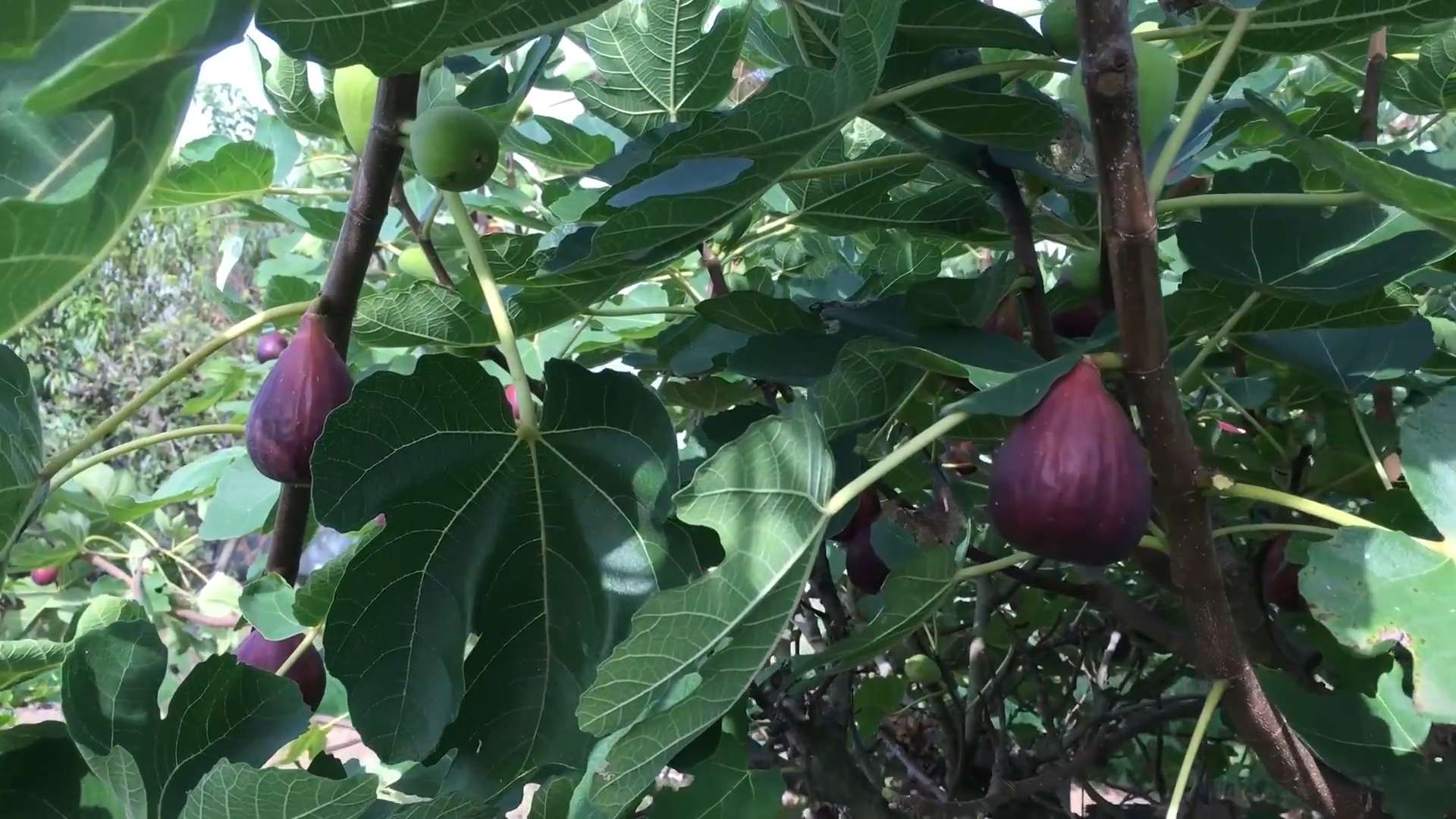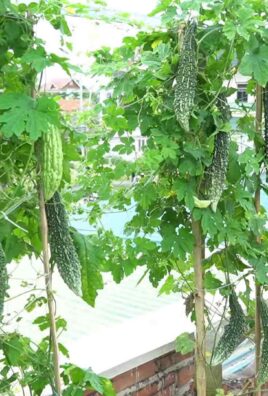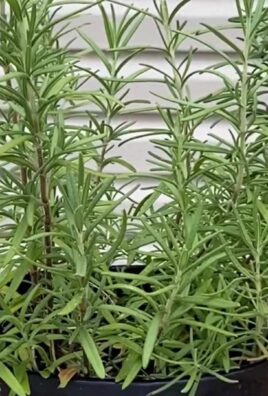Growing Figs Backyard can feel like a dream come true, right? Imagine stepping outside your back door and plucking a perfectly ripe, sweet fig straight from the tree. It’s not just a fantasy; it’s totally achievable with a little know-how! For centuries, figs have been cherished, not only for their delicious taste but also for their symbolic significance in various cultures. From ancient Greece, where they were considered a sacred fruit, to the Mediterranean, where they’re a staple ingredient, figs have a rich and fascinating history.
But let’s be honest, sometimes the thought of growing figs backyard can seem a bit daunting. Where do you even start? That’s where this DIY guide comes in! I’m here to share some simple, effective tricks and hacks that will help you cultivate a thriving fig tree, even if you don’t have a green thumb. We’ll cover everything from choosing the right variety for your climate to protecting your precious figs from pests and diseases.
Why do you need these DIY tricks? Because store-bought figs simply can’t compare to the flavor of homegrown ones. Plus, gardening is incredibly therapeutic, and there’s nothing quite like the satisfaction of nurturing a plant from a tiny sapling to a fruit-bearing beauty. So, let’s dive in and unlock the secrets to successfully growing figs in your own backyard!

Growing Figs in Your Backyard: A DIY Guide to Sweet Success
Okay, so you want to grow figs in your backyard? Awesome! Figs are delicious, relatively easy to care for, and add a touch of Mediterranean charm to any garden. I’ve been growing figs for years, and I’m excited to share my tips and tricks with you. This guide will walk you through everything you need to know, from choosing the right variety to harvesting your own sweet, juicy figs.
Choosing the Right Fig Variety
Before you even think about planting, you need to pick the right fig variety for your climate. Not all figs are created equal! Some are more cold-hardy than others, and some produce better fruit in certain regions.
Here’s what to consider:
* Climate: This is the most important factor. If you live in a colder climate (USDA zones 6-7), you’ll need a cold-hardy variety like ‘Chicago Hardy’, ‘Brown Turkey’, or ‘Celeste’. If you’re in a warmer climate (zones 8-10), you have more options, including ‘Black Mission’, ‘Kadota’, and ‘LSU Purple’.
* Size: Fig trees can get pretty big, so consider how much space you have. Some varieties are naturally smaller or can be kept smaller with pruning. ‘Little Miss Figgy’ is a great dwarf variety.
* Fruit Characteristics: Think about what kind of figs you like to eat. Do you prefer dark, rich figs or lighter, sweeter ones? Research the flavor and texture of different varieties before making your choice.
* Self-Fertility: Most fig varieties are self-fertile, meaning they don’t need another tree to produce fruit. However, some varieties, like Smyrna figs, require pollination by a specific wasp. Unless you live in an area where these wasps are present, stick to self-fertile varieties.
I personally recommend starting with a ‘Brown Turkey’ fig. It’s a reliable producer, relatively cold-hardy, and the figs are delicious!
Preparing the Planting Site
Once you’ve chosen your fig variety, it’s time to prepare the planting site. Figs need plenty of sunlight and well-draining soil.
Here’s what you need to do:
* Sunlight: Choose a spot that gets at least 6-8 hours of direct sunlight per day.
* Soil: Figs prefer well-draining soil with a slightly acidic to neutral pH (6.0-7.0). If your soil is heavy clay, amend it with plenty of organic matter, such as compost or well-rotted manure. This will improve drainage and provide nutrients.
* Space: Give your fig tree plenty of room to grow. Depending on the variety, you’ll need at least 15-20 feet of space between trees. If you’re planting in a container, choose a large pot (at least 20 gallons) with drainage holes.
* Test Your Soil: I highly recommend getting a soil test before planting. This will tell you the pH of your soil and whether it’s lacking any essential nutrients. You can usually get a soil test done through your local agricultural extension office.
Planting Your Fig Tree
Now for the fun part – planting your fig tree!
Here’s a step-by-step guide:
1. Dig a Hole: Dig a hole that’s twice as wide as the root ball and just as deep.
2. Amend the Soil: Mix some compost or other organic matter into the soil you removed from the hole.
3. Remove the Tree from the Container: Gently remove the fig tree from its container. If the roots are circling the pot, loosen them up a bit before planting.
4. Place the Tree in the Hole: Place the tree in the hole, making sure the top of the root ball is level with the surrounding soil.
5. Backfill the Hole: Backfill the hole with the amended soil, gently tamping it down as you go.
6. Water Thoroughly: Water the tree thoroughly after planting. This will help settle the soil and get the roots off to a good start.
7. Mulch: Apply a layer of mulch around the base of the tree to help retain moisture and suppress weeds. Use organic mulch like wood chips or straw. Keep the mulch a few inches away from the trunk to prevent rot.
8. Stake (Optional): If your tree is young and spindly, you may want to stake it for the first year or two to provide support.
Caring for Your Fig Tree
Once your fig tree is planted, it’s important to provide it with proper care.
Here’s what you need to do:
* Watering: Water your fig tree regularly, especially during dry periods. Figs need consistent moisture to produce good fruit. Water deeply, soaking the soil around the roots. Avoid overwatering, as this can lead to root rot.
* Fertilizing: Fertilize your fig tree in the spring with a balanced fertilizer. Look for a fertilizer with an NPK ratio of 10-10-10 or similar. Follow the instructions on the fertilizer package. You can also amend the soil with compost or other organic matter to provide nutrients.
* Pruning: Pruning is important for maintaining the shape and size of your fig tree and for encouraging fruit production. Prune your fig tree in late winter or early spring, before new growth begins. Remove any dead, damaged, or crossing branches. You can also prune to shape the tree and to control its size.
* Pest and Disease Control: Figs are generally pest and disease resistant, but they can be susceptible to certain problems. Watch out for pests like aphids, spider mites, and fig beetles. You can control these pests with insecticidal soap or neem oil. Common diseases include fig rust and leaf spot. Prevent these diseases by providing good air circulation and avoiding overhead watering. If you do encounter a disease, treat it with a fungicide.
* Protecting from Cold: If you live in a colder climate, you’ll need to protect your fig tree from frost and freezing temperatures. Wrap the trunk of the tree with burlap or blankets. You can also build a temporary shelter around the tree. For container-grown figs, move the pot to a sheltered location, such as a garage or shed.
Harvesting Your Figs
The moment you’ve been waiting for – harvesting your figs!
Here’s how to tell when your figs are ripe:
* Softness: Ripe figs will be soft to the touch and will yield slightly when squeezed gently.
* Color: The color of the fig will change depending on the variety. Some figs will turn a deep purple or black, while others will turn a yellowish-green.
* Drooping: Ripe figs will often droop downward on the branch.
* Cracking: Some figs will develop small cracks in the skin when they’re ripe.
To harvest your figs, gently twist them off the branch. Be careful not to damage the fruit. Figs are best eaten fresh, but they can also be dried, canned, or made into jam.
Important Note: Figs produce two crops of fruit per year: a breba crop in the spring and a main crop in the late summer or fall. The breba crop develops on the previous year’s growth, while the main crop develops on the current year’s growth. Some varieties only produce one crop per year.
Troubleshooting Common Fig Problems
Even with the best care, you may encounter some problems with your fig tree. Here are some common issues and how to fix them:
* Fig Splitting: Fig splitting is when the figs crack open before they’re ripe. This is usually caused by inconsistent watering. To prevent fig splitting, water your fig tree regularly and consistently, especially during dry periods.
* Fig Drop: Fig drop is when the figs fall off the tree before they’re ripe. This can be caused by a variety of factors, including stress, lack of pollination, or pest infestation. Make sure your fig tree is getting enough water, sunlight, and nutrients. Check for pests and diseases and treat them accordingly.
* No Fruit: If your fig tree isn’t producing any fruit, it could be due to a number of reasons. Make sure you’ve chosen a self-fertile variety. Check the soil pH and nutrient levels. Prune your fig tree properly. Protect your fig tree from cold temperatures.
* Pest Infestation: Figs can be susceptible to pests like aphids, spider mites, and fig beetles. Control these pests with insecticidal soap or neem oil. You can also try attracting beneficial insects to your garden, such as ladybugs and lacewings, which will prey on these pests.
* Disease: Common fig diseases include fig rust and leaf spot. Prevent these diseases by providing good air circulation and avoiding overhead watering. If you do encounter a disease, treat it with a fungicide.
Growing Figs in Containers
Don’t have a lot of space? No problem! You can grow figs in containers.
Here

Conclusion
So, there you have it! Mastering the art of growing figs in your backyard doesn’t have to be an intimidating endeavor. With a little patience, the right techniques, and a willingness to experiment, you can transform your outdoor space into a personal fig orchard, overflowing with delicious, sun-ripened fruit. This DIY approach, focusing on [specific technique mentioned in the article, e.g., container gardening, pruning methods, soil amendments], is a must-try for any fig enthusiast looking to maximize their yield and enjoy the freshest possible figs right from their own backyard.
The beauty of growing figs is its adaptability. Feel free to experiment with different fig varieties to find the ones that thrive best in your specific climate and soil conditions. Consider adding companion plants like lavender or rosemary to deter pests and enhance the overall health of your fig trees. You can also explore different pruning techniques to shape your trees and encourage fruit production. For those in colder climates, consider planting your figs in containers that can be easily moved indoors during the winter months. This allows you to enjoy fresh figs even when the weather outside is frightful.
Don’t be afraid to get your hands dirty and embrace the learning process. Growing figs is a rewarding experience that connects you with nature and provides you with a delicious and healthy harvest. We encourage you to try this DIY trick for growing figs in your backyard and witness the transformation firsthand. The satisfaction of picking your own ripe figs, knowing you nurtured them from sapling to fruit-bearing tree, is truly unparalleled.
We’re confident that with these tips and a little dedication, you’ll be enjoying a bountiful fig harvest in no time. Remember to document your journey, take pictures of your progress, and most importantly, share your experiences with us! We’d love to hear about your successes, challenges, and any unique techniques you discover along the way. Your insights can help other fig enthusiasts on their own gardening adventures. So, go ahead, plant those fig trees, and let the fig-growing magic begin! Share your stories and photos in the comments below – we can’t wait to see your backyard fig havens!
Frequently Asked Questions (FAQs)
What is the best time of year to plant fig trees?
The ideal time to plant fig trees is during the dormant season, which is typically in late fall or early spring. This allows the tree to establish its roots before the active growing season begins. Planting in the dormant season minimizes stress on the tree and increases its chances of survival. However, if you live in a region with mild winters, you can plant fig trees at any time of year, as long as the ground is not frozen. When planting, ensure the soil is well-draining and amended with compost or other organic matter to provide essential nutrients.
How much sunlight do fig trees need?
Fig trees thrive in full sunlight, requiring at least 6-8 hours of direct sunlight per day. Adequate sunlight is crucial for fruit production and overall tree health. Insufficient sunlight can lead to reduced fruit yield, smaller fruit size, and weaker growth. If you are planting your fig tree in a container, make sure to place it in a location that receives ample sunlight throughout the day. If you live in a particularly hot climate, providing some afternoon shade can help prevent sunburn on the leaves and fruit.
How often should I water my fig tree?
Watering frequency depends on several factors, including the climate, soil type, and age of the tree. Newly planted fig trees require more frequent watering to establish their root systems. Generally, water deeply and less frequently, allowing the soil to dry out slightly between waterings. During hot, dry periods, you may need to water your fig tree more often. Overwatering can lead to root rot, so it’s essential to ensure the soil is well-draining. A good rule of thumb is to check the soil moisture level before watering. If the top inch of soil is dry, it’s time to water.
What kind of soil is best for fig trees?
Fig trees prefer well-draining soil that is rich in organic matter. They can tolerate a variety of soil types, but they thrive best in slightly acidic to neutral soil with a pH between 6.0 and 7.0. Amend heavy clay soils with compost, sand, or other organic matter to improve drainage. Sandy soils can be amended with compost or peat moss to improve water retention. A soil test can help you determine the pH and nutrient levels of your soil. Based on the results, you can amend the soil accordingly to create an optimal growing environment for your fig tree.
Do fig trees need fertilizer?
Fig trees benefit from regular fertilization, especially during the growing season. Use a balanced fertilizer with a ratio of 10-10-10 or 8-8-8. Apply the fertilizer in early spring, just before new growth begins. You can also apply a second application of fertilizer in mid-summer. Avoid fertilizing fig trees in late fall or winter, as this can encourage new growth that is susceptible to frost damage. Organic fertilizers, such as compost or manure, are also excellent options for providing nutrients to your fig trees.
How do I prune my fig tree?
Pruning is essential for maintaining the shape and productivity of your fig tree. The best time to prune fig trees is during the dormant season. Remove any dead, damaged, or crossing branches. Thin out the canopy to improve air circulation and sunlight penetration. Prune back branches that are growing in the wrong direction or are too close to the ground. The specific pruning techniques will vary depending on the variety of fig tree and your desired shape. Research the specific pruning requirements for your fig variety to ensure you are pruning correctly.
How do I protect my fig tree from pests and diseases?
Fig trees are generally resistant to pests and diseases, but they can be susceptible to certain problems. Common pests include fig mites, scale insects, and nematodes. Diseases include fig rust, leaf spot, and root rot. Regularly inspect your fig tree for signs of pests or diseases. Treat any problems promptly with appropriate insecticides or fungicides. Good cultural practices, such as proper watering, fertilization, and pruning, can help prevent pests and diseases. Consider using organic pest control methods whenever possible to minimize the impact on the environment.
How long does it take for a fig tree to produce fruit?
The time it takes for a fig tree to produce fruit depends on the variety, age, and growing conditions. Some fig varieties can produce fruit in as little as one year, while others may take several years. Generally, fig trees grown from cuttings or air layering will produce fruit sooner than those grown from seed. Providing optimal growing conditions, such as adequate sunlight, water, and nutrients, can help accelerate fruit production. Be patient and persistent, and you will eventually be rewarded with a bountiful fig harvest.
Can I grow fig trees in containers?
Yes, fig trees can be successfully grown in containers, especially in regions with cold winters. Choose a large container with good drainage. Use a well-draining potting mix that is rich in organic matter. Place the container in a location that receives at least 6-8 hours of direct sunlight per day. Water regularly, especially during hot, dry periods. Fertilize the fig tree regularly during the growing season. In colder climates, move the container indoors during the winter months to protect the tree from frost damage. Container-grown fig trees may require more frequent pruning to maintain their size and shape.
What are some popular fig varieties for backyard growing?
There are many different fig varieties to choose from, each with its own unique characteristics. Some popular fig varieties for backyard growing include Brown Turkey, Celeste, Black Mission, and Kadota. Brown Turkey figs are known for their hardiness and productivity. Celeste figs are small and sweet, with a rich flavor. Black Mission figs are large and juicy, with a dark purple skin. Kadota figs are mild and sweet, with a thick skin. Consider your climate, soil conditions, and personal preferences when choosing a fig variety for your backyard.





Leave a Comment